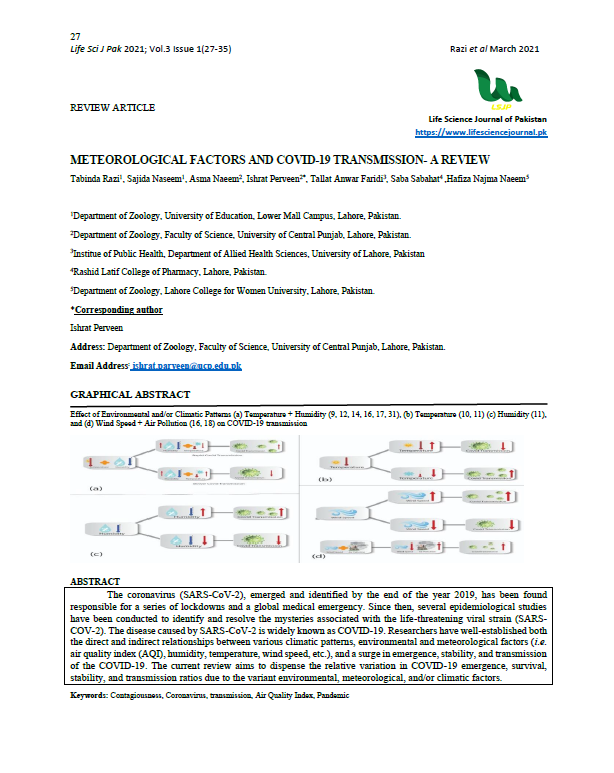METEOROLOGICAL FACTORS AND COVID-19 TRANSMISSION- A REVIEW Impact of various Environmental, meteorological, and/or climatic patterns on COVID-19 emergence, stability, and transmission rates
Main Article Content
Abstract
The coronavirus (SARS-CoV-2), emerged and identified by the end of the year 2019, has been found responsible for a series of lockdowns and a global medical emergency. Since then, several epidemiological studies have been conducted to identify and resolve the mysteries associated with the life-threatening viral strain (SARS-COV-2). The disease caused by SARS-CoV-2 is widely known as COVID-19. Researchers have well-established both the direct and indirect relationships between various climatic patterns, environmental and meteorological factors (i.e. air quality index (AQI), humidity, temperature, wind speed, etc.), and a surge in emergence, stability, and transmission of the COVID-19. The current review aims to dispense the relative variation in COVID-19 emergence, survival, stability, and transmission ratios due to the variant environmental, meteorological, and/or climatic factors.
Article Details

This work is licensed under a Creative Commons Attribution 4.0 International License.
 Life Science Journal of Pakistan
Life Science Journal of Pakistan
